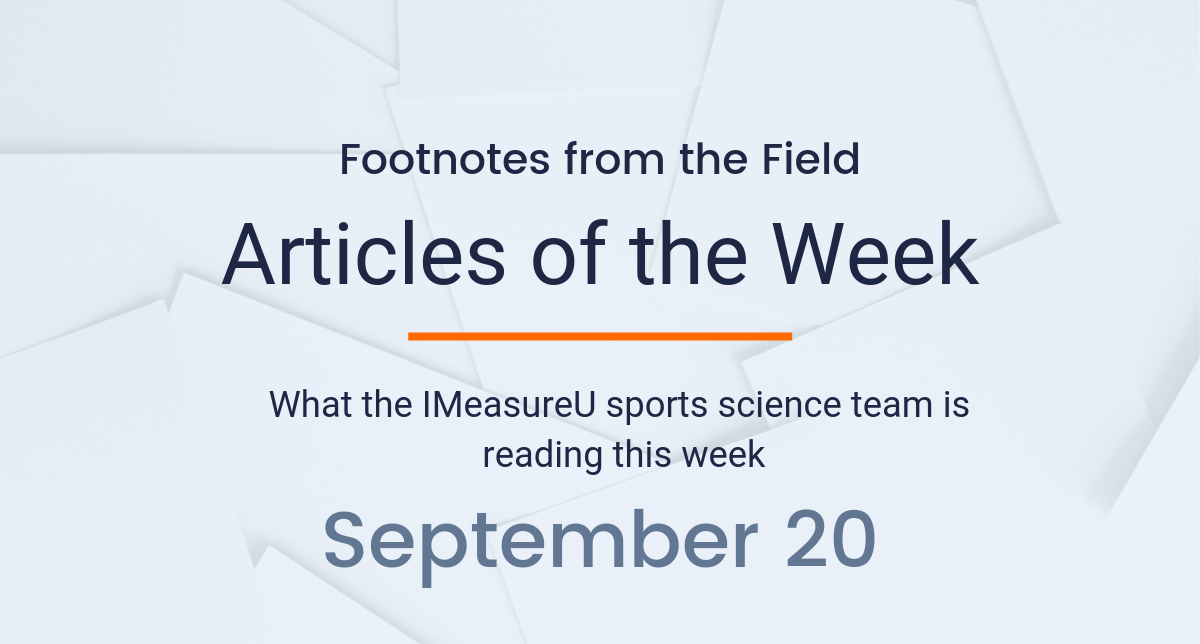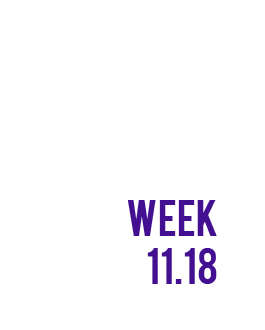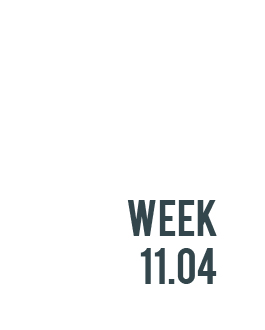
Here’s what the sports science team at IMeasureU is reading this week:
The first article from this edition of the articles of the week comes from author John Fitzpatrick and colleagues from Northmbria University, UK in the Journal of Strength & Conditioning Research. This study aimed to quantify the reliability of potential measures of fatigue; a subjective wellness questionnaire, jump performance tests, and tri-axial accelerometer variables derived during submaximal shuttle running in elite youth soccer players. Fitzpatrick et al. (2019) also aimed to establish the minimum test duration that could be used for the submaximal shuttle run while maintaining good reliability. The findings from this study provide practitioners with valuable information about the reliability of a range of potential fatigue-monitoring measures.
The next article comes from author Matthew Cuthbert and colleagues at the University of Salford, UK in the Sports Medicine Journal. The aim of this review was to investigate the effect of NHE-training volume on eccentric hamstring strength and biceps femoris fascicle length adaptations. Compliance to interventions that include Nordic hamstring exercises (NHE) have been shown to be low, potentially because of the high volumes which are being described in scientific research. However, this review suggests that reducing NHE volume prescription does not negatively affect adaptations in eccentric strength and muscle architecture when compared with high dose interventions. These findings suggest that lower volumes of NHE may be more appropriate for athletes, with an aim to increase intervention compliance, potentially reducing the risk of hamstring injury.
This article in the Journal of Sports Sciences, author Scott Wearing and colleagues used transmission-mode ultrasound to investigate the influence of habitual running foot-strike pattern on Achilles tendon properties during barefoot walking and running. Peak ultrasound transmission velocity in the Achilles tendon was significantly higher in the forefoot strike running pattern during walking and running vs the rearfoot strike pattern. This suggests that functional Achilles tendon properties differ with habitual footfall patterns in recreational runners and will require different training interventions.
Our fourth article comes from Brady Green and colleagues in the Scandinavian Journal of Medicine and Sports Science. Calf muscle strain injuries show consistent rates of prevalence and re-injury in elite Australian Football players, therefore the aim of this study was the describe the epidemiology of calf muscle strain injuries in elite Australian Football players. Secondly, the authors wanted to determine if recovery following injury is different according to: (i) injury type (index vs re-injury); (ii) muscle injured (soleus vs gastrocnemius); and, (iii) mechanism of injury (running-related activity vs non running-related activity).
The last article in this week’s articles of the week comes from Anne Aune at colleagues at Middlesex University, UK in the Journal of Sports Sciences. Foam rolling and eccentric exercise interventions have been demonstrated to improve range of motion (ROM), however nowhere in the literature have these two modalities been compared. Therefore the aim of this study was to provide practitioners with valuable information who are looking ot improve ROM with their athletes. Clear conclusions are drawn by the paper’s authors in that eccentric training would appear a more efficacious modality than foam rolling for improving dorsiflexion ROM in elite academy soccer players.
For more sports science check out our blog for in-depth case studies and industry updates. Also, be sure to sign up for our newsletter below so you are always up to date with the latest research.




